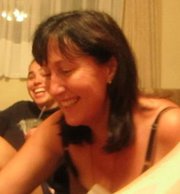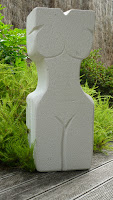Sixth Blog
Framework: Work and Paper/Craft:
Ambience
Peer Reviewing
Peer Reviewing
References
This is my final blog entry and it will include the topics of the specific framework that my activity falls into: Work and the topic of ambience.
It will also include peer reviewing and the comments that I have posted regarding other students blogs and all literature that I have used throughout Part 1: Blog of this assignment.
In our most recent class we got into groups of which our activities fitted into either:
Food, Paper or Play frameworks.
My activity of hebel sculpture is considered under the framework of Paper/Craft.
Within this framework of paper we as a group then considered how ergonomics and affordances fit in to the activity we have chosen to use.
This exercise enabled us to decide for ourselves which components of ergonomics and affordances fit within our activity. The basis of this has now provided the structure for Part 2: Reflective Essay.
Paper/Craft:
This framework uses activities that are commonly known as hobbies. Because they are under the work framework, they are not necessary for living but can be necessary for individuals on a personal level.
Ambience:
We also covered ambience briefly.
Ambiance is described by the Concise English Dictionary (1990) as "the mood, character, quality, tone, and atmosphere etc., particularly of an environment" (p.31).
I would describe ambience as the mood set when sculpting from hebel. This includes having time so therefore I am not rushing, the sun is bright and warming my back therefore it is bright and I am warm, I have the radio on and songs remind me of great times I have shared with family and friends. All of these factors afford a positive ambiance and atmosphere to create within.
Peer reviewing of students comments:
Here are some examples of the comments that I have made about other student’s activity blogs.
Godhelp’s final blog post: “enjoying my guitar over the semester break”.
|
Nancy’s first blog entry: Introduction & Mindfulness.
|
Anna’s fifth blog entry: Work & Labour “Activity & Me”
|
Izabela’s final blog entry: Ethics
|
All literature used within the six blogs:
Arendt, H. (1958). The human condition. (p.7). Chicago: Chicago University Press.
Bowden, T. 2000. The craft room: What’s going on in there? Taken from: Caulton, R.F. (Ed). (2003). The best of occupation 1993-2003. (p.14) Dunedin: Rogan McIndoe Print Ltd.
Caulton R, Dickson R (2007) What's going on? Finding an explanation for what we do. In: J Creek, A Lawson- Porter, eds. Contemporary issues in occupational therapy: reasoning and reflection. Chichester: John Wiley, 87-114.
Christiansen, C. H. & Townsend E. A. (2004). An introduction to occupation. In C. H Christiansen & E. A. Townsend (Eds.), Introduction to occupation: The art and science of living (p. 255). New Jersey: Pearson Education, Inc.
Crepeau, E. (2003). Analysing occupation and activity: A way of thinking about occupational performance. In, Willard and Spackman’s occupational therapy (10th ed., pp.189-198). Philadelphia: Lippincott, Williams & Wilkins.
Green, T. F. (1968). Work, leisure and the American schools. (p.99). New York: Random House.
Hayward, L.A. & Sparkes, J.J. (1990). The Concise English Dictionary. (p.31) Fourth edition, twelfth impression. Great Britian: Mackays of Chatham PLC.
Hendry, J. (2008). An introduction to social anthropology sharing our worlds (2nd ed.). (p.220-22). London: Palgrave MacMillian.
Law, M. (Ed.). (1998). Client centered occupational therapy. (p.111). Thorofare, NJ: SLACK Incorporated.
Additional information:
On a final note I just want to say thank you for taking the time to read through this blog and I hope you have learnt something about both hebel sculpture and my interpretation of this activity.



